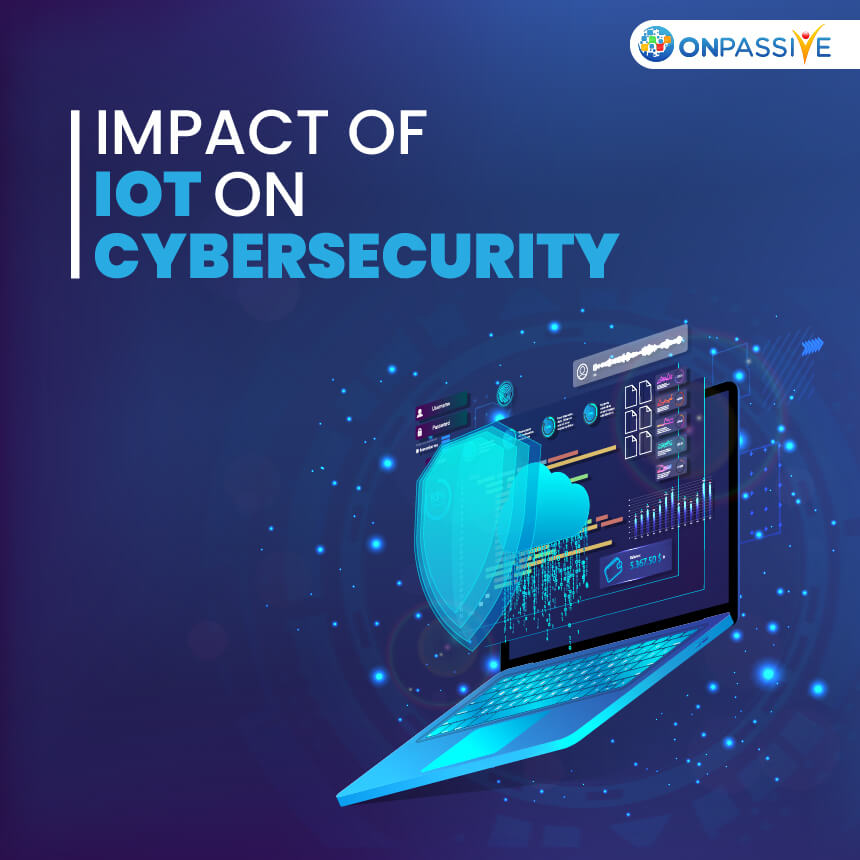The Internet of Things (IoT) is a network of physical objects connected to the Internet that can identify themselves to other devices and interact with internal or external conditions using embedded technology. The Internet of Things (IoT) is a setting in which an object that can represent itself grows in importance by connecting to other objects and the vast amounts of data that flow around it.
We usually think of computers, tablets, and smartphones when talking about interconnection. The Internet of Things (IoT) describes a world in which almost anything can be connected and communicated in a “smart mode” by combining simple data to generate usable intelligence.
The physical world is becoming one big information system due to the Internet of Things, with the ultimate goal of improving quality of life and enabling new business opportunities. However, the rapid growth of IoT comes with its problems, among which cybersecurity is one major concern.
Internet of Things (IoT) and Cybersecurity
As more operations and data are moved online, cybersecurity is becoming a major concern for all businesses. According to the latest survey, ‘cyber incidents,’ particularly ransomware attacks and data breaches, are the top concern for businesses in 2022. According to research, average weekly corporate cyber attacks increased by 50% in 2021.
The Internet of Things (IoT) expands the scope of this cybersecurity threat. To begin with, every new device that connects to the Internet represents a potential entry point for cybercriminals. Our speakers, doorbells, and thermostats are potentially vulnerable to cyber-attacks and our phones and laptops. As more of our everyday objects connect, our private networks’ attack surface grows.
The IoT’s rapid growth implies an ever-expanding network of vulnerable devices on a larger scale.
Furthermore, malicious actors find IoT devices to be an easier target. Our computers can be safeguarded by sophisticated cybersecurity software that is updated on a regular basis to keep up with new threats.
However, many new IoT devices have limited processing capabilities, making firewalls, antivirus software, and security patches more challenging to install. According to a recent report, nearly half of all internet-connected devices in hospitals are vulnerable to hacking.
Finally, as the Internet of Things expands, we will become more reliant on connected devices. This means that any successful hack could be more disruptive and costly, whether personal, business, or societal. Consider how much sensitive information could be accessed if financial or health-related IoT systems are hacked or the potential harm that hackers could cause.
How IoT Is Impacting Cybersecurity Landscape
As new IoT technologies were developed and adopted by commercial and industrial interests, their security vulnerabilities, attack vectors, connectivity, and data generation were all investigated during the implementation process rather than before. As a result, we’ve arrived at where we are now.
The following are a few ways the Internet of Things is changing the cyber security landscape:
- More Devices & Increased Connectivity
Hackable devices have exploded in recent years, thanks to more connected devices than ever before. There has never been a more open season for hackers and those looking to commit cyber-attacks and cyber-crimes, from smartphones and tablets to IoT sensors, smart meters, and even smart buildings.
As a result, there are many security solutions aimed at protecting the ever-increasing number of “things” that connect us and our technology. With the number of smart and connected devices appearing to be increasing all the time, it seems reasonable to assume that device security solutions tailored to specific types of devices and technologies will occur sooner rather than later.
- Huge Volume Of Data
Data has quickly risen to become one of the world’s most valuable commodities. Much of it is extremely valuable to various organizations and individuals. Every day, IoT devices generate massive amounts of data, and you can bet your bottom dollar that this data is valuable enough to attract the attention of hackers.
As a result, those looking to secure their IoT data and devices will likely prioritize data-generating IoT technologies. Encryption and other security services will likely become dominant players in the cyber security arena in the coming years, given the value of the data produced and the harm that can be done if it is leaked or stolen.
- Additional Attack Vectors
With the proliferation of connected devices and IoT technologies, hackers and targeted cyber-attacks have gained access to an increasing number of attack vectors. This increase has brought attention to the vulnerability of many IoT technologies and devices, but such concerns have had little impact on the development or implementation of these technologies in and around commercial and industrial sectors.
While the increased number of ways hackers and cybercriminals can intrude on and exploit devices and technologies hasn’t swayed those integrating IoT technologies into their existing network architectures, it has shifted their focus to the need for adequate cyber security and helped drive much of the development of IoT security.
- Automation
Automation has slowly but steadily made its way through the vast majority of modern industrial processes, even touching and transforming the cyber security arena, alongside and even before the Internet of Things.
Protecting automated systems from malicious exploitation has become a top priority for many businesses experimenting with automation, as automated systems become more common and humans become increasingly removed from many operations.
Automated cyber security systems with cutting-edge technologies like Artificial Intelligence (AI) and Machine Learning are becoming more common. These technologies allow businesses and enterprises to detect and respond to cyber incidents in time frames that humans would find impossible to match.
With the help of AI and Machine Learning, cyber security systems may be almost entirely automated in the future.
Conclusion
The Internet of Things has numerous potential benefits for individuals, businesses, and societies, but these can only be realized if we all work together to limit cyber criminals’ opportunities. Companies should be open to discussion and debate about how to protect against IoT cybersecurity threats in the future and implement best practices today.
The post How IoT Is Going to Change Cybersecurity? appeared first on ONPASSIVE.









































































